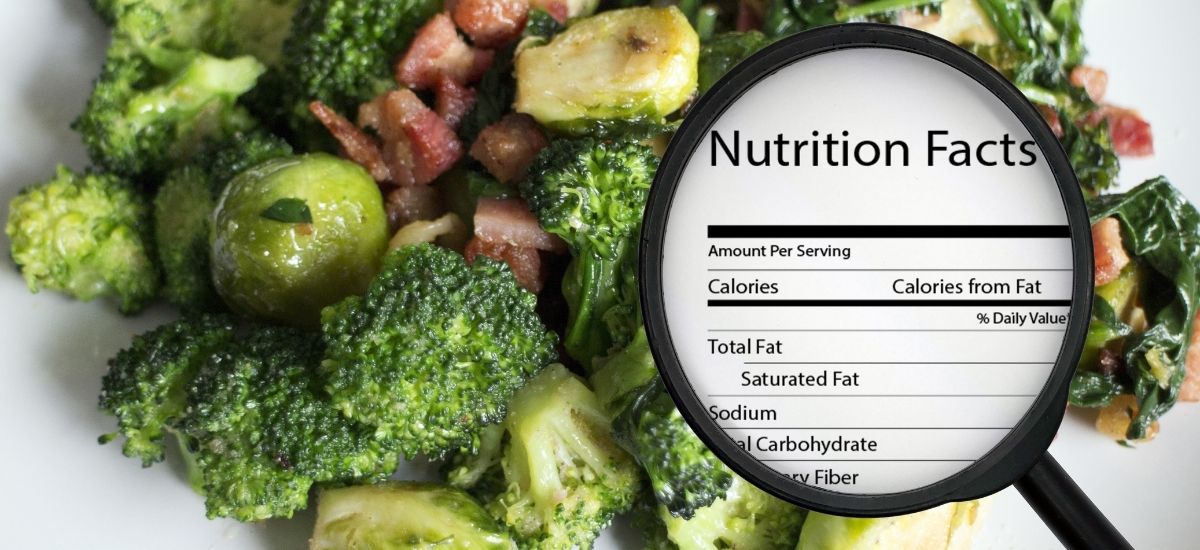Key Takeaways
- Modern customers view healthy eating as a lifestyle choice and personal identity statement, not just physical wellness, which means restaurants must align with their values around sustainability, ethics, and transparency to succeed.
- Transparency about ingredients, sourcing, and business practices has become more important than traditional factors like taste and price, as customers want complete information about what they're consuming and supporting.
- Plant-forward menus that incorporate at least 70% plant-based ingredients without eliminating meat entirely can attract health-conscious diners while maintaining broad appeal in meat-centric markets.
- Offering customizable meal options is essential because people have different definitions of "healthy," allowing restaurants to cater to individual dietary preferences and conflicting nutritional beliefs across age groups and demographics.
Bethenny Frankel quoted, "Your diet is a bank account. Good food choices are good investments.”
Growing consciousness for health and wellness among American customers has been driving rapid changes in the food business. According to L.E.K. Consulting’s 2018 food and beverage survey, 93% of consumers want to eat healthy at least some of the time, with 63% trying to eat healthy most or all of the time. Health-oriented food primarily includes fresh, natural, additive-free and sustainably produced food.
But it is also important to understand that healthy eating is not only about being in good physical condition. For today’s customers, especially the Millenials and Gen Z, it is a lifestyle choice and expression of their individual identity. Consumer desires reign supreme— and the restaurant industry is changing itself to meet them.
The brands that consumers eat and drink have to be a reflection of their personal values, which means before they buy into anything they want to be made aware of things like the origin story, sustainability endeavors, corporate ethics, etc.
Therefore, getting into a healthy food business involves more than just adding a few soups and salads in your restaurant menu. It takes a whole lot of research and strategy to get it right.
People are increasingly choosing restaurants that offer more than just good food. There has to be a fine balance of taste, authenticity, health, and transparency.
So how can you be a part of this accelerating trend? Here are five go-to tips.
5 Tips to Make your Restaurant a Go-to Place for Health Enthusiasts
Be transparent
Taste, price, and experience, which were key factors in helping people decide on a restaurant, are now quickly being preceded by transparency. Food transparency is about being clear and honest about sourcing, ingredients, nutrition, environmental footprints, and social impacts.
In a nutshell, customers want to have as much information as possible about the food they’re eating and Nielsen’s 2017 global sustainability survey backs this claim as it found that 67% of American consumers want to know everything that goes into the food they buy.
In a way, a customer’s choice of a healthy restaurant is also a form of activism. They’re going to endorse those restaurant brands that uphold their own beliefs. Therefore, it helps that you use the freshest and healthiest ingredients in all your food, run your business ethically, support local communities, be straightforward about shortcomings and have consistent communication with your customers.
Offer more plant-based dishes
With more and more people opting for healthy diets, restaurant menus need to be more plant-forward if they want to adapt to modern trends. Being plant-forward does not mean being vegan or vegetarian. It simply means incorporating more plant-based foods, at least 70%, in your diet without eliminating animal products.
Chefs need to get creative and more imaginative, especially in a country like the US where meat-based dishes have dominated most restaurant menus and plants and vegetables are usually served as side dishes or as small plates.
Restaurants also need to ensure that each of these plant-based ingredients are organically grown and ethically sourced. These efforts will check two boxes that today’s customers primarily insist on—a healthy diet and sustainability.
.jpeg)
Offer healthy drinks
If you’re offering wholesome food, but serving drinks laden with ingredients like sugar, then the whole point of being a healthy restaurant goes to vain. Replacing regular juices with cold-pressed ones, infusing drinks with herbs, using little to no sugar are some of the ways restaurants can make their beverages healthier.
Fermented drinks like kombucha are also becoming popular, with a recent Yelp survey indicating that review mentions of this beverage grew 377% in the last 12 months. Kombucha is made of fermented yeast and thought to have health benefits that aid gut health.
Biodynamic wines, which is a wine grown without chemical fertilizers and pesticides and also incorporating aspects of astrology, are also gaining favor. So are farm-to-shaker cocktails, where bartenders use locally-sourced fresh ingredients in their concoctions.
According to the same Yelp survey, more and more people are also seeking non-alcoholic options as they become more mindful of their health, which is why having a good variety of healthy cocktails on the menu will certainly have an appeal.
Delivering healthy food to customers’ doorsteps
The online food delivery market is expected to surge in the coming years, reaching $200 billion by 2025. As lifestyles change, people are willing to spend more on convenience. For these customers, an added incentive will be to receive healthy food at their doorstep at the click of a button.
There are several food businesses already cashing on this trend by creating delivery-only meal programs. Factor 75, 22 Days Nutrition and Sakara are some of the popular ones. To satiate the demands of contemporary customers, it’s not enough for restaurants to only offer healthy meals on their menu. With online ordering being hugely sought-after, brands need to have an efficient online ordering system set up with a well-segregated menu.
👉 Also Read: How beneficial is DoorDash Drive for Last-mile Delivery?
Allow customization
While customers are keen on healthy food, some studies also show that the definition of ‘healthy’ can vary from individual to individual. According to the International Food Information Council Foundation's annual Food and Health Survey, about 8 in 10 respondents said they have found conflicting information about what foods to eat and what foods to avoid.
The same survey also revealed that 50% of survey respondents 65 and older called unsaturated fats healthy, in contrast to just 33% among the 18 to 34-year-olds. Similarly, women are more likely than men to consider some fats to be healthy and the younger population believes organic food to be more nutritious than the older generation.
So the key here for restaurants is to offer customization, whereby each customer is allowed to create a meal with ingredients of their choice. For delivery, especially, personalized home meal kits with pre-measured ingredients can prove to be a hit with health-savvy customers.
Final Thoughts...
Restaurants offering organic and healthy food choices are much in demand but, like any other emerging trend, it also comes with its own share of risks. Due to its niche appeal, before getting into the business, it’s critical to evaluate the market and demographics. But done right, healthy food businesses can be highly profitable.
💡You Might Also Like...
👉 5 Things To Consider When Adding "Healthy Choices' To The Restaurant Menu
👉 How To Create A Delivery-Only Restaurant Menu?
👉 The Great Menu Hack For Budget-Conscious Customers
Frequently Asked Questions
Being plant-forward means incorporating at least 70% plant-based foods in your menu without completely eliminating animal products. This approach allows you to cater to health-conscious customers while still offering meat options. Focus on making vegetables and plants the star of the dish rather than just side items.
Be clear and honest about your ingredient sourcing, nutrition information, environmental impact, and business practices. Share details about where your ingredients come from, how they're grown, and your sustainability efforts. Communicate openly with customers about your processes and even acknowledge any shortcomings you're working to improve.
Replace regular juices with cold-pressed versions, infuse drinks with fresh herbs, and minimize sugar content. Consider adding popular fermented drinks like kombucha, biodynamic wines, and farm-to-shaker cocktails made with locally-sourced ingredients. Also include non-alcoholic healthy options since more customers are seeking mindful drinking choices.
Since people have different definitions of "healthy" based on age, gender, and personal beliefs, customization allows each customer to create meals that match their specific dietary needs. Implement this by offering build-your-own meal options and for delivery services, consider personalized meal kits with pre-measured ingredients that customers can customize.
Yes, the online food delivery market is expected to reach $200 billion by 2025, and health-conscious customers value the convenience of receiving nutritious meals at home. Set up an efficient online ordering system with a well-organized menu, and consider creating delivery-only meal programs like successful companies such as Factor 75 and Sakara.


.gif)








